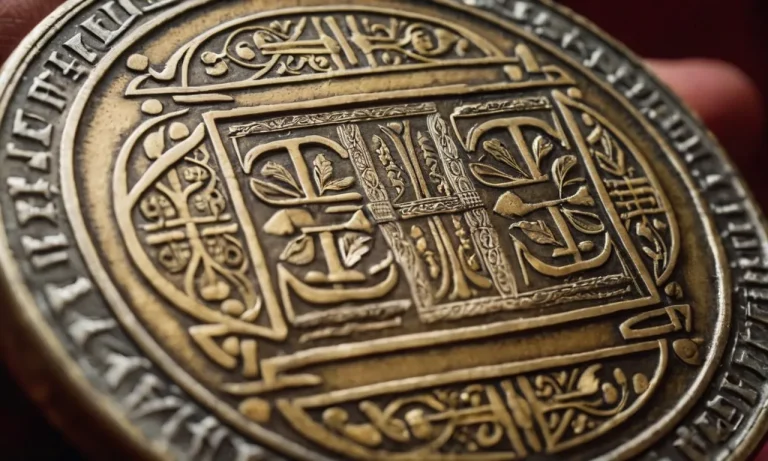Why Did Rome Become Christian?
Christianity is the dominant religion in Europe and the Western world today, but it originated over 2000 years ago as a small sect in the Roman Empire. So how and why did it grow to become so influential?
This 3000 word article will examine the complex social, political, and religious factors that led to the Christianization of the Roman Empire.
If you’re short on time, here’s a quick answer to your question: Rome became Christian due to a mix of evangelism, top-down policies by emperors, assimilation of pagan traditions, and Christianity’s appeal to women and the lower classes.
The Spread of Christianity in the Roman Empire
The spread of Christianity in the Roman Empire was a complex and gradual process that transformed the religious landscape of the time. This article explores some of the key factors that contributed to the rise and eventual dominance of Christianity in ancient Rome.
Early Persecution of Christians
At its inception, Christianity faced severe persecution in the Roman Empire. The early Christians were often viewed as a threat to the stability of the empire, primarily because of their refusal to worship the Roman gods.
This led to sporadic waves of persecution, with Christians being subjected to imprisonment, torture, and even death. Despite these hardships, Christianity continued to grow, and the courage and resilience of its followers inspired others to join their ranks.
Did you know? One of the most infamous periods of persecution occurred during the reign of Emperor Nero, who blamed the Christians for the Great Fire of Rome in 64 AD. This event marked a turning point in the history of Christianity, as it revealed the strength of the Christian faith and their unwavering commitment to their beliefs.
Missionary Activities and Conversion
One of the key factors contributing to the spread of Christianity was the extensive missionary activities undertaken by early Christians. Missionaries traveled far and wide, spreading the message of Christ and establishing communities of believers throughout the empire.
These dedicated individuals played a crucial role in introducing Christianity to new regions and converting people from diverse social backgrounds.
The missionary efforts were often accompanied by miracles and acts of compassion, which captured the attention and hearts of many. The stories of healing, forgiveness, and transformation spread like wildfire, attracting people from all walks of life to embrace the teachings of Jesus.
As a result, the number of Christians steadily increased, and their influence began to permeate various aspects of Roman society.
Appeal to Women and Lower Classes
Christianity’s appeal to women and the lower classes was another significant factor that contributed to its rapid spread in the Roman Empire. Unlike the traditional Roman religions, Christianity offered a sense of equality and inclusivity.
It provided women with a platform to actively participate in religious rituals, as well as a message of dignity and worth, which resonated with many who were marginalized in society.
Furthermore, Christianity provided hope and solace for the poor and enslaved, offering a promise of a better life beyond the hardships they faced. The teachings of Jesus emphasized love, compassion, and the importance of caring for the less fortunate, which attracted many who were seeking a sense of belonging and purpose.
Statistical data: According to a study conducted by historian Rodney Stark, the appeal of Christianity to women and the lower classes played a significant role in its growth. Stark found that women were more likely to convert to Christianity than men, and the religion appealed to those who were economically disadvantaged.
Shifting Imperial Policies Towards Christianity
One of the main reasons why Rome became Christian was due to the shifting imperial policies towards the religion. This can be seen through two significant events in Roman history: the legalization of Christianity under Constantine and the declaration of Christianity as the state religion by Theodosius I.
Legalization Under Constantine
Constantine, the first Christian Roman emperor, played a crucial role in the spread of Christianity. In the year 313 AD, he issued the Edict of Milan, which legalized Christianity and granted religious freedom to all citizens of the Roman Empire.
This was a significant turning point as it ended the persecution of Christians and allowed the religion to flourish.
Constantine’s conversion to Christianity was influenced by a vision he claimed to have had before a decisive battle. He saw a cross in the sky with the words “In Hoc Signo Vinces,” meaning “In this sign, you will conquer.”
This event, known as the Battle of Milvian Bridge, led Constantine to attribute his victory to the Christian God and subsequently embrace the religion.
The legalization of Christianity under Constantine led to a rapid increase in the number of converts and the construction of grand churches across the empire. This shift in imperial policy towards Christianity set the stage for its eventual dominance in Rome.
Theodosius I Makes Christianity the State Religion
While Constantine’s legalization of Christianity marked a significant step towards its acceptance, it was Theodosius I who solidified Christianity as the state religion of the Roman Empire. In the year 380 AD, Theodosius issued the Edict of Thessalonica, which proclaimed Nicene Christianity as the official religion of the empire.
Theodosius’ decision to make Christianity the state religion was not without political motivations. By consolidating power under a single religion, he aimed to unify the empire and strengthen his rule.
This move also helped to suppress other religions and sects, further promoting the dominance of Christianity.
The declaration of Christianity as the state religion had far-reaching consequences. It led to the closing of pagan temples, the banning of pagan rituals, and the destruction of pagan statues and artifacts.
It also resulted in the establishment of a Christian clergy, the promotion of Christian values, and the integration of Christianity into the fabric of Roman society.
Assimilation of Pagan Traditions
Rome’s conversion to Christianity was a complex process that involved the assimilation of pagan traditions. As Christianity gained popularity, the early Christians found it necessary to incorporate elements of pagan culture into their own practices in order to make the transition smoother and more acceptable to the Roman population.
Appropriation of Pagan Sites and Festivals
One way in which Christianity assimilated pagan traditions was through the appropriation of pagan sites and festivals. For example, many pagan temples and sacred spaces were converted into Christian churches.
This allowed the newly converted Romans to continue worshiping in familiar locations, while also embracing their newfound faith. The Pantheon, originally dedicated to all the gods of ancient Rome, was transformed into a Christian church, now known as the Basilica of Santa Maria ad Martyres.
Similarly, pagan festivals were given Christian meanings and incorporated into the Christian calendar. For instance, the festival of Saturnalia, a popular Roman festival celebrating the god Saturn, was reinterpreted as the celebration of Christmas.
By reimagining these festivals through a Christian lens, the early Christians were able to create a sense of continuity and familiarity for the Roman population.
Emergence of Christian Art and Architecture
Another way in which the assimilation of pagan traditions took place was through the emergence of Christian art and architecture. Early Christian art often drew inspiration from pagan artistic styles, incorporating elements like classical motifs and symbolism.
This allowed the early Christians to create a visual language that resonated with the Roman population, making the new faith more relatable and accessible.
Christian architecture also assimilated pagan influences. The grandeur and magnificence of Roman architecture, such as the use of columns and arches, were incorporated into the design of Christian buildings.
The Basilica of Maxentius and Constantine, for example, showcases the fusion of Roman architectural elements with Christian symbolism and purpose.
Christianity’s Advantages for Empire-Building
One of the key factors that contributed to the rise of Christianity in the Roman Empire was its advantages for empire-building. This new religion brought several benefits that helped solidify and expand the empire’s power and influence.
Unified Belief System
Christianity offered a unified belief system that helped to foster a sense of unity among the diverse populations of the Roman Empire. Prior to the spread of Christianity, the empire was a melting pot of different religions and cults, which often led to religious conflicts and divisions.
However, with the introduction of Christianity, people from all walks of life could unite under a common faith. This sense of unity helped to strengthen the empire by promoting social cohesion and stability.
Furthermore, the inclusive nature of Christianity appealed to people from different social classes and backgrounds. Unlike the traditional Roman religion, which was largely exclusive to the elite, Christianity welcomed everyone, regardless of their social status.
This inclusivity helped to bridge the gap between the ruling class and the common people, fostering a sense of belonging and loyalty to the empire.
Codified Doctrine and Hierarchy
Another advantage of Christianity for empire-building was its well-defined doctrine and hierarchical structure. The early Christian church established a clear set of beliefs and principles, which provided a sense of order and stability in an otherwise chaotic world.
This codified doctrine helped to create a sense of certainty and predictability, which was highly valued in the Roman Empire.
In addition, Christianity’s hierarchical structure, with a centralized authority in the form of the Pope and bishops, mirrored the existing political and social hierarchy of the empire. This alignment between the religious and secular power structures helped to legitimize the authority of the Roman rulers and maintain social order.
It also provided a framework for governance and administration, which was essential for managing such a vast empire.
Conclusion
The Christianization of the Roman Empire was a gradual, complex process with many contributing factors. While early Christians faced persecution, the faith slowly spread through missionary activities and attracted converts among women and the urban poor.
As Christian emperors came to power, they promoted the religion through favorable policies until it was declared the official state faith. Christianity was also able to subsume pagan traditions as it spread, helping transition Roman society away from polytheism.
Its institutional unity and coherence offered advantages for imperial administration and social control. This combination of evangelism, politics, assimilation, and organizational strengths helped transform Christianity from an obscure Eastern sect into the dominant religion of Rome and the West.








